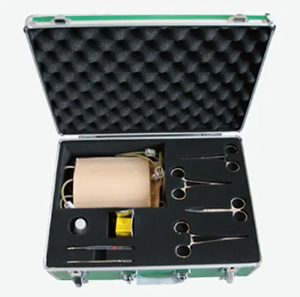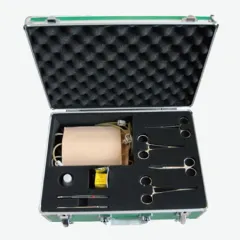In the vast field of medical education, the combination of theory and practice has always been the core issue of teaching. The traditional medical teaching method often focuses on the imparting of theoretical knowledge, while the practical operation link is relatively weak. However, with the continuous progress of medical technology and the continuous innovation of teaching concepts, the surface vessel ligation hemostasis model, as an innovative teaching tool, is gradually changing the face of medical teaching, making medical teaching more vivid, intuitive and practical.
With its highly simulated characteristics, it provides medical students with a close to the real operating environment. These models are not only similar to the real human blood vessel structure in appearance, but also achieve a high degree of simulation in internal structure, blood vessel distribution, blood flow and so on. When practicing with these models, medical students are able to feel similar touch and feedback to the real operation, so that they can better understand and master the key steps and techniques of ligation and hemostasi

More importantly, application makes medical teaching closer to actual practice. In traditional medical teaching, students can only understand the principles and methods of hemostasis through the explanation of books and teachers, and there is no opportunity for practical operation. The surface vessel ligation hemostasis model provides students with an operational platform to simulate actual combat, so that they can practice in the simulated situation, so as to better adapt to the needs of future clinical work. This practical teaching method not only improves students' operational skills, but also enhances their resilience and self-confidence.
In addition, repeatability and safety. Compared with real patients, the model can be used repeatedly without causing harm to patients due to operational errors. This security not only protects students' enthusiasm for practice, but also allows them to practice repeatedly until they have mastered the skill without worry. At the same time, the repeatability of the model also enables students to continuously consolidate and improve their operational level in multiple exercises.
In summary, the surface vessel ligation hemostasis model has brought revolutionary changes to medical teaching with its characteristics of high simulation, actual combat, repeatability and safety. It not only allows medical students to practice in a simulated actual combat environment, improving their operational skills and adaptability, but also lays a solid foundation for the smooth development of future clinical work.

